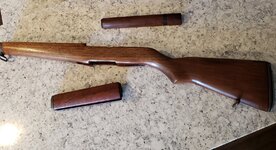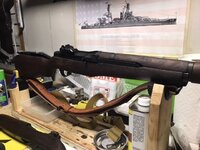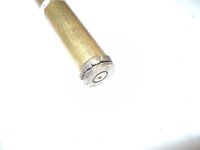- Messages
- 841
- Reactions
- 2,185
High pressure gas leaking past a failed cartridge case is vented into the magazine well and exposes a large area to pressure. In dealing with pressure, the force is applied over an area. To pull rough numbers out of my head, say the side of the mag well is 2 x 3 inches. That's 6 square inches. Suppose even 5% of the 50k psi in the chamber leaks past the gas seal of of the failed case and pressurizes the volume of the mag well, that's still 2500 psi acting on 6 square inches for 15,000 pound of force....on a thin wood piece. Granted, these are made up numbers but it illustrates what can happen. Sorta like dropping an M80 firecracker into the magazine well and closing the bolt over the top of it.OK, then what are the mechanics of the failure in your opinion? How does the stock get split into two?
There's some interesting writing in Hatcher's Notebook about all the development at Springfield Armory to produce brass that didn't do this. Even subtle changes like how a primer was crimped sometimes had major effects.










![IMG_8522[1].jpg IMG_8522[1].jpg](https://data.northwestfirearms.com/attachments/592/592424-7d5405f863f20bad23a4085af2fe6231.jpg)
![IMG_8524[1].jpg IMG_8524[1].jpg](https://data.northwestfirearms.com/attachments/592/592425-1df3d179bcbe138ca99a3a103a3b8c71.jpg)





